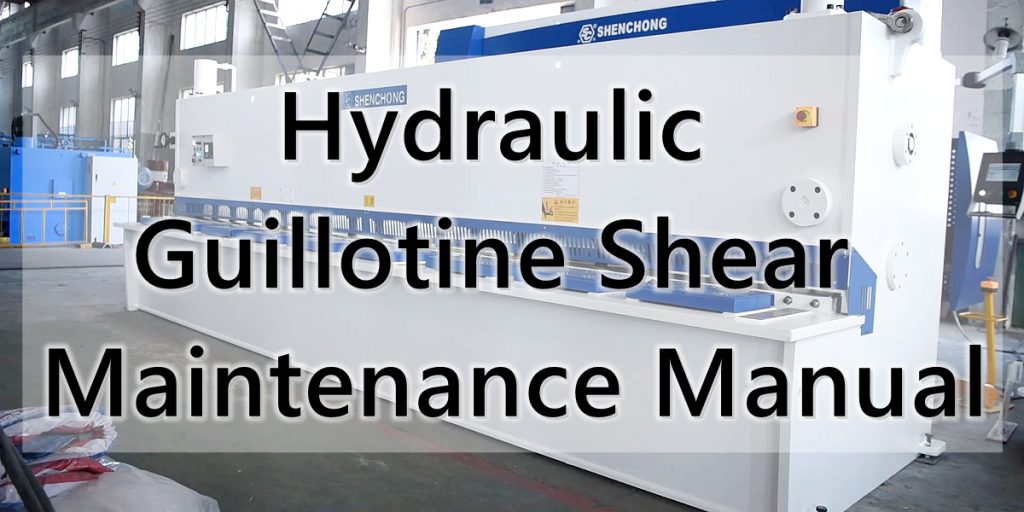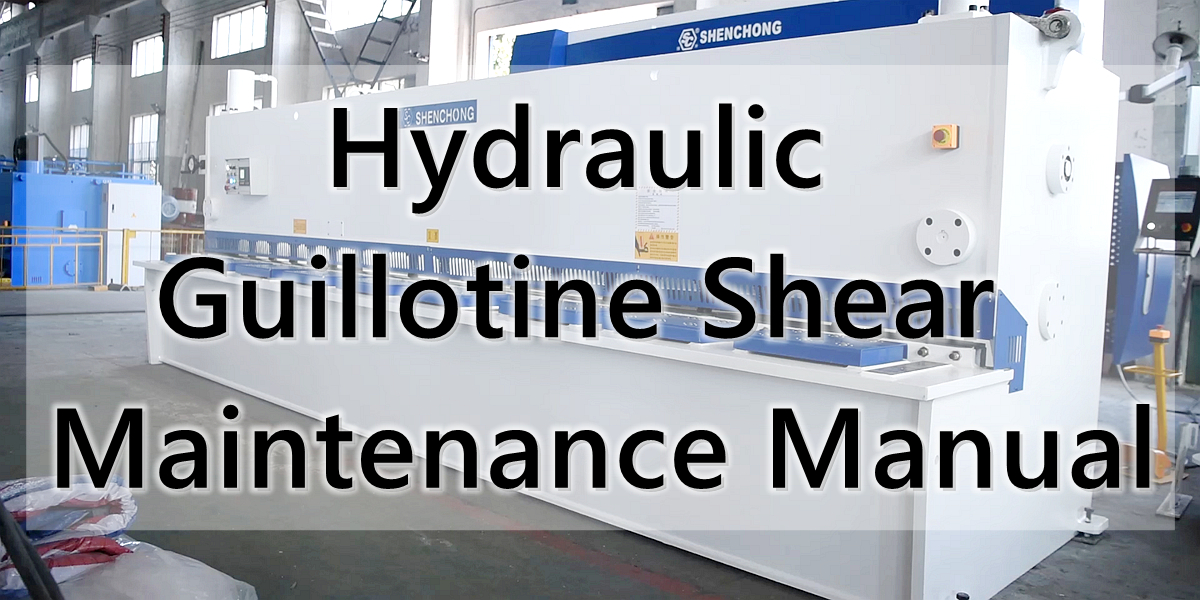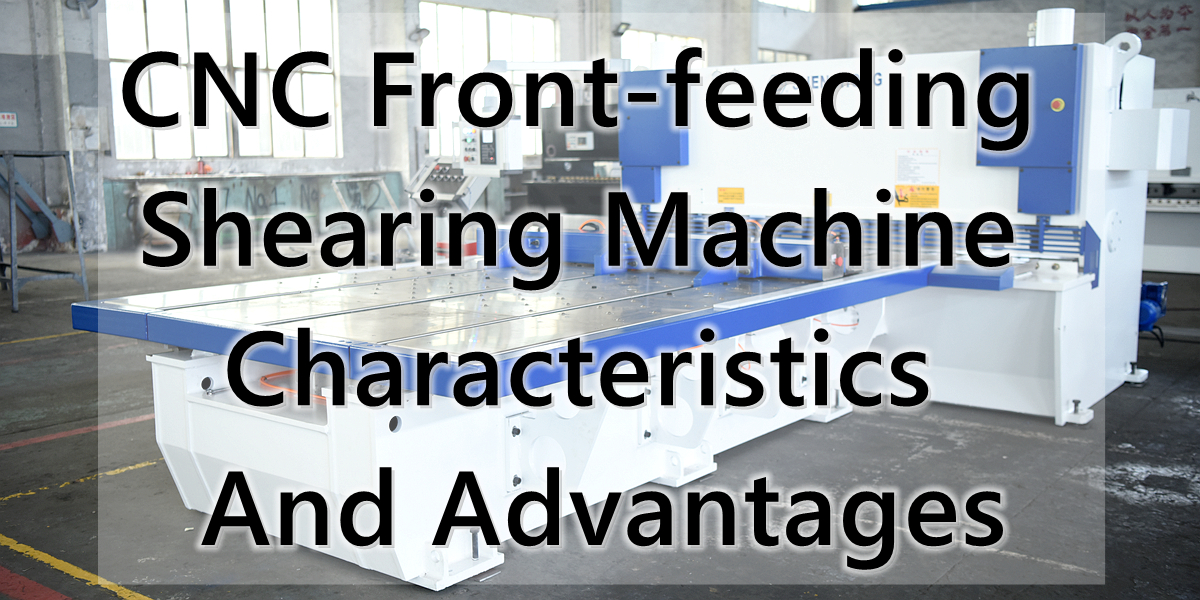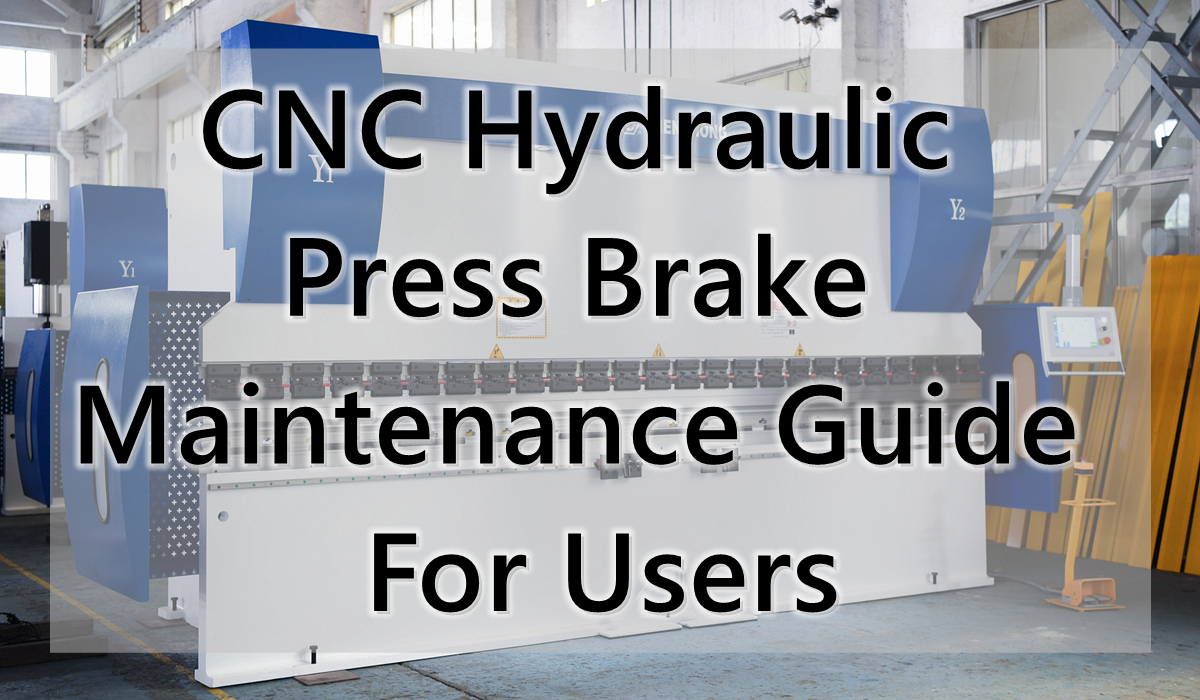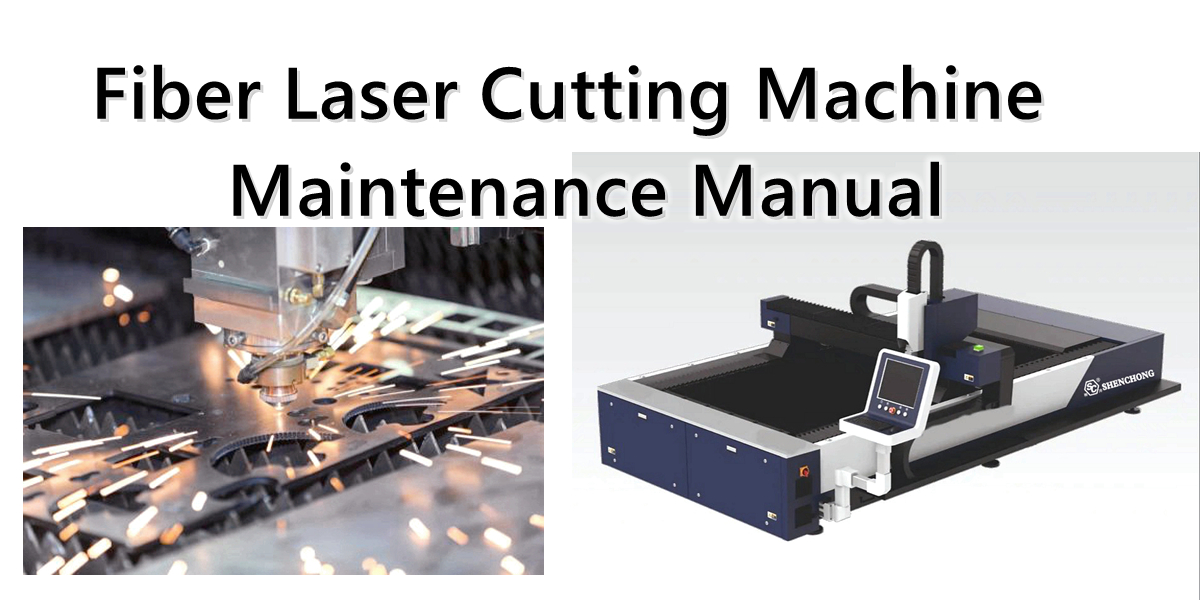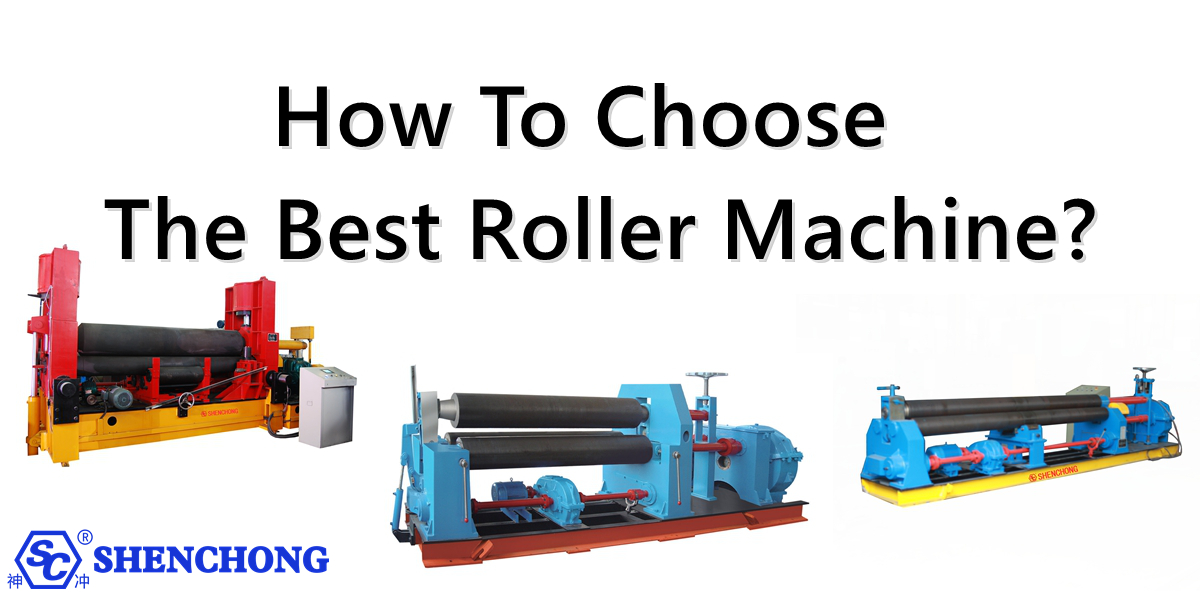Table of Contents
The hydraulic guillotine shear maintenance is divided into three levels: daily maintenance, regular maintenance, and specialized inspections. Proper maintenance can significantly extend the lifespan of the equipment and reduce malfunctions. Timely and effective maintenance not only ensures production efficiency but also guarantees the safety of operators.
1. The Importance of Hydraulic Guillotine Shear Machine Maintenance
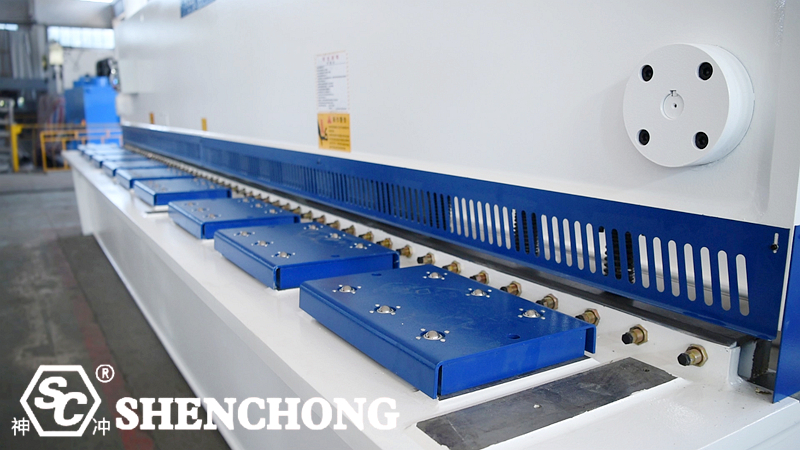
Hydraulic shear machines are large-scale equipment commonly used in the sheet metal processing industry for precise cutting of metal plates. Since these machines involve three core components: hydraulic systems, mechanical transmissions, and electrical controls. Their long-term, stable operation relies heavily on proper maintenance. The importance of maintenance is evident in several aspects:
- Ensuring Cutting Quality and Accuracy
Blade gap, hydraulic system pressure, and slide accuracy directly affect the perpendicularity and flatness of the cut. Regular maintenance prevents issues like burrs, deformation, or inaccurate cuts caused by blade wear or hydraulic system instability.
- Extending Equipment Lifespan
Failure to regularly replace hydraulic oil, filters, and seals accelerates wear on pumps and valves. Proper maintenance reduces component wear, minimizes fatigue damage, and slows overall machine deterioration, thus extending the machine’s lifespan.
- Improving Production Efficiency
Well-maintained shear machines operate smoothly with fewer breakdowns and downtime. Sharp blades and accurate backgauge settings enhance processing efficiency and product quality.
- Reducing Maintenance Costs
Preventive maintenance identifies potential problems early, preventing minor issues from escalating into major failures. Replacing wear parts regularly costs far less than major repairs or replacing hydraulic pumps and cylinders.
- Ensuring Operator Safety
Hydraulic system leaks or pressure fluctuations can cause malfunctions, misoperations, and even accidents. Regular inspection of electrical controls and safety devices (e.g., emergency stop buttons, safety guards) ensures operator safety.
- Enhancing Company Image and Competitiveness
Stable equipment guarantees high-quality products and timely delivery. A sound maintenance program demonstrates a company’s management capabilities and professionalism, building customer trust.
CNC hydraulic guillotine shear maintenance is not merely about ensuring functionality, it’s essential for quality, efficiency, safety, and cost control. Consistent daily checks and periodic maintenance are key to maintaining competitiveness and ensuring long-term, efficient operation.
2. Safety Precautions For Maintenance & Operation
- Strictly adhere to the machine tool safety operating procedures; unauthorized personnel are not permitted to operate the machine.
- Before operation, ensure that all safety devices (guards, light curtains, emergency stop buttons) are intact and connected to the power supply.
- Never touch the cutting edge or moving parts with your hands. Before cutting, ensure that your hands and tools are out of the danger zone.
- Never disassemble or repair the hydraulic system while it is under pressure; release all hydraulic pressure and lock the power supply before performing any maintenance.
- Always wear appropriate personal protective equipment: safety glasses, protective gloves, safety shoes, etc.
- Do not store flammable, explosive, or corrosive materials on the machine.
- In case of any abnormality (abnormal noise, smoke, oil leakage), immediately press the emergency stop button and shut down the power and hydraulic systems. Do not reset the machine until the problem has been identified and resolved.
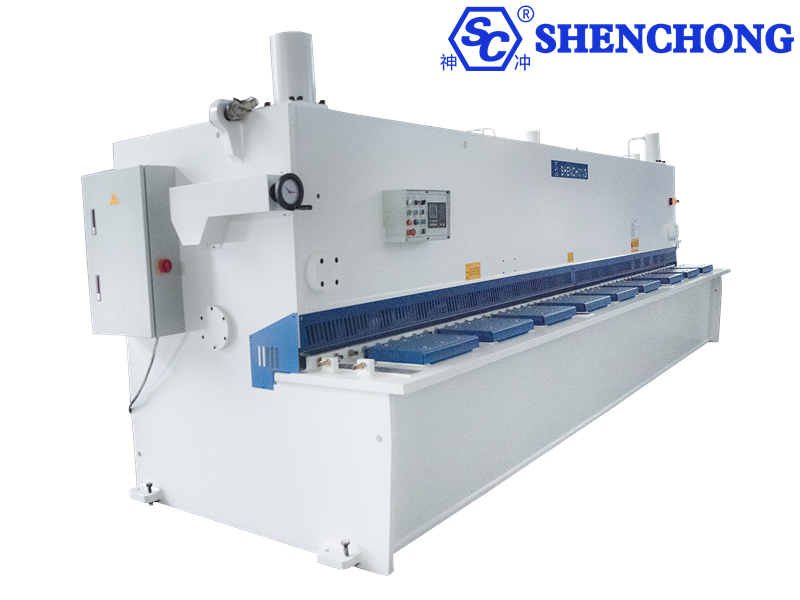
3. Daily Inspection and Maintenance
Main structural components and functional modules of a hydraulic guillotine shearing machine:
- Frame and slide (blade carriage)
- Upper blade, lower blade (moving blade, fixed blade)
- Hydraulic cylinder, hydraulic pump, and oil tank
- Hydraulic valve assembly (proportional valve/directional valve/relief valve)
- Motor and electrical control box (PLC/push buttons/foot pedal switch)
- Rear stop, front support, and material feeding mechanism
- Operator panel and safety features (light curtain, guardrails, emergency stop, etc.)
- (Note: When performing maintenance, always refer to the machine’s nameplate, technical specifications, and the electrical and hydraulic schematics provided by the manufacturer.)
Pre-start-up checks:
- Check that the oil level in the reservoir is within the specified range; the oil should not be emulsified, discolored, or have an unusual odor.
- Check for any visible leaks in the oil lines, cylinder, and fittings.
- Check the electrical cabinet for loose wiring, signs of burning, and ensure that all buttons, emergency stop, and foot pedal switches function correctly.
- Check the cutting edge for any obvious damage or foreign objects.
- Verify that the light curtain/safety door operates correctly and the safety interlock is functioning.
- Check that all bolts and fasteners on the machine frame are secure (especially the frame-to-base bolts).
During operation:
- Listen for any unusual noises (from gears, bearings, pumps, motors, etc.); check for any burning or oily odors.
- Monitor oil pressure and temperature to ensure they are within the normal range. Typical operating oil temperature should be below 60°C (depending on the manufacturer).
Post-operation/shutdown checks:
- Clean the worktable, guide rails, and cutting edge of any debris and metal shavings; use compressed air or a brush (do not clean with your hands).
- Turn off the power, shut off the air supply (if applicable), and lock the control cabinet.
- Record any abnormalities encountered during operation and complete the maintenance log.
4. Regular Maintenance Requirements
Weekly:
- Check the hydraulic oil filter and suction filter screen for clogging; replace or clean as necessary.
- Check and tighten the main bolts and nuts on the bearing housing.
- Inspect hydraulic system hoses and quick-connect fittings for aging, cracks, or leaks.
- Test the emergency stop and interlock switch functions.
Monthly:
- Clean the hydraulic oil level indicator/sight glass and verify oil quality.
- Check for abnormal temperature rise and operating current in the motor and gearbox bearings.
- Check the lubrication of the slide rail and add grease as needed.
- Check and adjust the cutting edge clearance.
Quarterly:
- Replace the main filter in the hydraulic circuit (depending on operating environment and oil quality).
- Check and tighten the mounting bolts of the hydraulic pump and motor.
- Clean the electrical cabinet and check the tightness of the terminal connections.
- Test oil viscosity and cleanliness; replace oil if necessary.
Annually:
- Completely replace the hydraulic oil (depending on oil type and operating conditions); clean the oil tank and replace the filter element.
- Inspect and replace seals (oil seals, O-rings) and wear parts (pipe fittings, hoses).
- Inspect and calibrate the cutting edge; consider grinding or replacing the tool if necessary.
- Perform a comprehensive electrical system inspection (insulation, resistance, grounding).
Note: The above intervals are general recommendations; specific intervals should be adjusted and documented based on the machine type, usage intensity, and operating environment.
5. Maintenance of Key Components
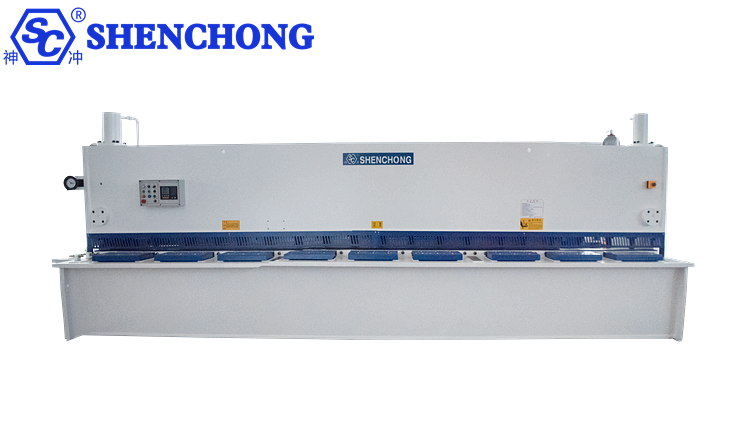
1) Lubrication System Maintenance
- Regularly lubricate the guide rails, hinges, and bearings according to the lubrication chart. Use the grease type recommended by the manufacturer (generally lithium-based or complex lithium-based grease; for high temperature and load conditions, use high-performance grease).
- Keep the guide rail surface clean to prevent metal shavings from entering the lubrication grooves.
- Do not use lubricating oil with high impurity content or apply lubricants containing solid particles manually at the lubrication points.
- Maintain detailed lubrication records, including the time, quantity, and type of lubricant used.
2) Hydraulic System Maintenance
Hydraulic Oil Inspection and Replacement:
- Use hydraulic oil that meets the equipment specifications (viscosity, wear resistance, and oxidation resistance requirements). Common grades: ISO VG32/46 (depending on season and temperature).
- Regularly check the oil color and odor. If emulsification (oil and water mixture), significant darkening, or a burnt odor is detected, immediately replace the oil and investigate the cause.
- When replacing the oil, thoroughly clean the oil tank, remove sediment, and replace the filter element.
Filter Element and Strainer:
- Install a pressure differential indicator; replace the filter element when a pressure differential alarm occurs.
- Regularly inspect and clean the suction strainer to prevent impurities from entering the oil pump.
System Pressure and Temperature Monitoring:
- Check that the relief valve and working pressure settings are within the specified range.
- Monitor the oil temperature; excessive temperature reduces oil life and can cause valve sticking. Install a cooler or fan if necessary.
Connectors and Hoses:
- Use qualified hydraulic hoses; regularly check for hose kinks, aging, and clamping condition; replace with the same specifications and working pressure rating.
- Apply a suitable sealant to the threaded connections to prevent leaks; avoid excessive sealant entering the oil system.
3) Electrical System Maintenance
- After power shutdown, regularly inspect the distribution cabinet for dust and clean it with dry compressed air (protect sensitive components).
- Tighten terminals and grounding wires; check grounding resistance against national/local standards.
- Check the operating parameters and fault records of thermal relays, contactors, and frequency converters (if any).
- Check PLC parameters, buttons, and indicator lights; back up the control program (export regularly). Replace any worn or malfunctioning buttons, indicator lights, and foot pedals to ensure the reliability of the emergency stop function.
4) Blade Maintenance and Replacement
- The upper and lower blades should be kept sharp and parallel. Regularly clean debris from the blade gap using a soft brush or compressed air.
- Replace or sharpen the blades if they show significant chipping, cracks, or uneven cutting. When sharpening, ensure the blade angle matches the original specifications.
- When replacing blades, tighten the blade bolts in sequence using a torque wrench to the specified torque to prevent blade misalignment.
- The material and heat treatment of the blades are critical; it is recommended to use original or equivalent high-quality blades.
5) Hydraulic Pump, Valve, and Cylinder Maintenance
- Regularly check the suction temperature, noise, and vibration of the hydraulic pump. If cavitation or air entrainment is detected, purge the system and check the suction line and filter.
- If hydraulic valves (proportional valves, directional valves, etc.) are contaminated or sticking, disassemble, clean, or replace the valve core and sleeve according to procedure.
- Inspect the hydraulic cylinder for scratches on the piston rod, oil leaks, and replace seals and check the installation clearance.
- Regularly inspect and replace worn drive components such as couplings, belts, and bearings.
Common troubleshooting and solutions table:
Fault symptoms | Possible causes | Troubleshooting steps |
Uneven cutting edge | Loose rear guard, improper blade gap | Adjust the stop mechanism and reset the clearance. |
Insufficient cutting force | Insufficient hydraulic oil or pump malfunction | Top up/replace hydraulic oil and check the pump. |
Hydraulic oil overheating | Prolonged continuous operation, poor oil quality | Shut down the machine and allow it to cool down; then replace the hydraulic oil with a suitable type. |
High noise level | Air in the pump, loose piping | Check the oil suction line, purge air, and tighten connections. |
Oil leakage | Worn-out seals | Replace the seals. |
Proper and timely hydraulic guillotine shear maintenance not only ensures production efficiency but also guarantees the safety of operators. It is recommended that workshops establish standard operating procedures and assign dedicated personnel for routine maintenance. Operators and maintenance staff should receive regular training. For any major repairs or modifications, contact the equipment manufacturer or an authorized service provider.
